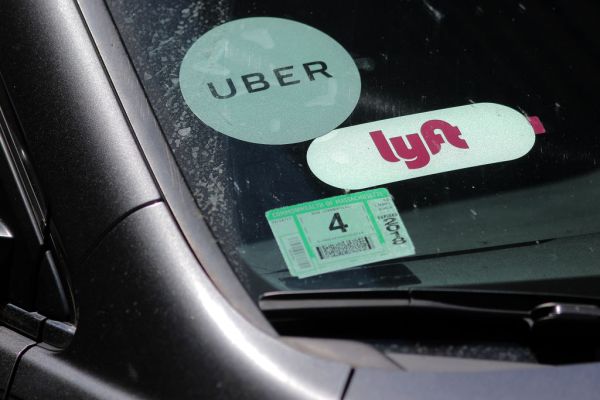Lyft is sticking to its previous target to hit quarterly adjusted profitability by the fourth period of 2021, a milestone it says it can achieve even with fewer rides.
The company reiterated its quarterly adjusted profit target timeline — a milestone based on earnings before interest, taxes, depreciation and amortization — during its second-quarter earnings call yesterday. Upholding the target in this uncertain era of COVID-19 is newsworthy on its own. But what caught our attention was Lyft’s claim that it would hit this milestone even at a lower ridership than it had previously targeted.
“We now expect we can achieve adjusted EBITDA profitability with 20% to 25% fewer rides than what was assumed when we initially disclosed this last year,” Lyft CEO Logan Green said during the call.
Quarterly rides will need to be about 5% to 10% above the level achieved in the fourth quarter of 2019, according to CFO Brian Roberts. Lyft had 22.9 million rides in Q4 2019. That means Lyft needs to reach about 25 million rides a quarter to hit that target next year.
The COVID-19 pandemic crushed Lyft’s ridership in the second quarter of 2020, with total rides falling from 21.2 million in the first quarter of the year to about 8.6 million in the second quarter. But Lyft’s executive team said rides continued to recover from the doldrums of this spring and early summer. Ridership will need to continue to recover, but the company insists that measures it has taken will allow it to reach profitability.
Roberts noted that while hitting this target will require rides to continue to recover from the lows of March, April and May, the company’s actions to reduce costs and increase unit economics has allowed it to stay on the path to profitability. Specifically, Lyft has launched a number of initiatives to reduce costs by improving computing efficiencies, unlocking savings on transaction processing and targeting savings through insurance initiatives.
One key driver, according to Lyft was its “discipline” on rider incentives. Total incentives classified as sales and marketing declined 96%, between the first and second quarters, from $100 million to just $4 million — or 1.2% of revenue. Lyft is moving away from coupons and instead investing in its product, which it believes will have a stronger return on investment. As a result, Lyft said it expects that its sales and marketing expense as a percentage of revenue will be permanently lower post-COVID.
“We believe we’re creating lasting structural improvements to our business, and given these improvements we now believe we can generate margin in excess of the long-term model that we discussed at the time of IPO,” Roberts said, adding that Lyft plans to update investors early next year.
Lyft’s comments are similar to what Uber promised last week during is own quarterly report. TechCrunch covered those results here, if you’d like the broader picture. But more importantly, during its earnings call the American ride-hailing and food-delivery giant’s CFO Nelson Chai said that the company is “well-positioned to withstand continued uncertainty while driving toward our stated profitability target.”
Uber has made two profitability promises, first that it would “generate full-year adjusted EBITDA in 2021,” a promise that was later improved to generating positive adjusted EBITDA by Q4 2020.
So, which is Uber targeting, the full-year result or the Q4 2020 result? Later in the same portion of its Q2 2020 earnings call, Chai said that Uber’s recent performance and actions have given the company “continued confidence in our ability to achieve quarterly adjusted EBITDA profitability sometime in 2021.”
So, Uber anticipates reaching adjusted EBITDA in 2021, which is certainly a dismount from its Q4 2020 promise. Of course, given COVID-19 and all that it has brought, the change is not a surprise.
During its call, Uber’s CEO Dara Khosrowshahi said “pure-play delivery companies can and will be profitable” after Chai stressed earlier in the call that ride-hailing is still profitable at the company on an adjusted basis. So, Uber expects both halves of its business to generate adjusted profit in time.
When, then, is the real question. An analyst asked the company to dig in a bit more regarding when in 2021 the company might pull off the adjusted feat. Chai said that “a number of different things” impact the timing, including “COVID recovery and its impact on our mobility business,” which will help “dictate the timing of [profitability in] ’21.”
So, adjusted profit is coming for Uber sometime next year it thinks. Past that no one knows. Still, the promise is better than a complete abdication on its earlier promises to start generating adjusted profit in quick order. If Uber can manage a net positive adjusted EBITDA result for all of calendar 2021, it will wind up meeting its original pledge.
For Lyft and Uber Q2 was a forgettable period, but they still have their sights pinned on proving their long-term viability.
